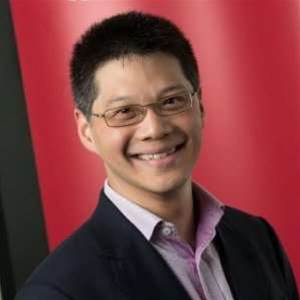Australia Post is struggling to find the right people and develop the culture it needs to move from being a long-time monopoly and into competition with a number of new rivals in the digital post space, the organisation’s CTO said today.

Speaking at the Forrester CIO Summit in Sydney, Tien-Ti Mak said AusPost was finding it difficult to make the transition from a 200-year old monopoly to compete against the likes of Toll, DHL and FedEx in the online space.
“The landscape in our business has been changing very rapidly, moving from this monopoly mode for the past 200 years or so - we’re used to sending little envelopes with letters in them and no-one’s been able to challenge us around that because it’s a monopoly service - now we’re moving into this world where we’re going up against .. all those guys in the online space.
“And to be brutally honest with you we have absolutely no idea how to do that,” he said.
“All of a sudden we’re becoming a global world. In order for us to be successful in a world that’s more competitive .. we have to figure out what our customers want. We have to be able to deliver to them what they need because that’s what will be success for us.”
AusPost is 12 months into a two-year major IT transformation which aims to digitise post and modernise the organisation’s technology.
It is made up of five work streams - building faster and more cost effective technology foundations; implementing a new customer-centric IT operating model; a new Digital Delivery Centre for the delivery of mobile and online products and services; IT leadership and training; and a new approach to information security, ‘Secure at Post’.
Mak gave an update on where AusPost is at with the customer-centric IT operating model stream, revealing the organisation had come across some major challenges, including with finding the right staff.
“The resources who can understand customer experience and who can translate it to technology are incredibly rare,” he said.
“You need to have people who have a human understanding of customer behaviour .. yet you have to be able to talk bits and bytes and translate that to programming specifications and functional specs and what is this bastard thing called cloud anyway, and it’s almost impossible.
“The key lesson we have learned is they do not grow on trees and you cannot hire them. You can’t even bring consultants in.”
Mak said the lack of suitable workers meant AusPost had been forced to try and grow them from within, in an effort to create a workforce of “double-headed people”.
Making IT understand the customer
Additionally, the organisation has struggled with instilling the importance of customer experience into its IT department.
Despite being a year into its IT transformation it is yet to find the “silver bullet”, Mak said, and is still trying to change how IT workers approach the customer experience.
“The challenge we’ve been trying to figure out is how do you bake that into what we do in IT, that’s been a challenge for us,” he said.
“What we tried to do is say ‘what is our organisation going to look like if we were to successfully inject the customer into the middle of everything we do - how does that change the day to day job of the guy who keeps the servers up and running .. how do we make it real for people?'”
“We hired three external consultants and none of them came with a pre-canned ‘yes this is how you do it’, this how you bake it into IT. We ended up building it ourselves. We tried cherry-picking bits and pieces of what each person brought to the table and tried to stitch it together.”
One approach AusPost took was to send IT workers out to customer premises to gain a further understanding of and connection with the customer experience. It said it is still working its way through that journey six months into the transformation project.
“The number of conversations happening with Post IT has grown astronomically [as a result],” Mak said.
Mak was hired last year by AusPost CIO Andrew Walduck to assist with the business transformation.
The project will run until the end of next year and is part of a $2 billion investment put aside by managing director Ahmed Fahour towards infrastructure, products and services in support of the digital economy.










 Digital NSW 2025 Showcase
Digital NSW 2025 Showcase












_(1).jpg&h=140&w=231&c=1&s=0)



